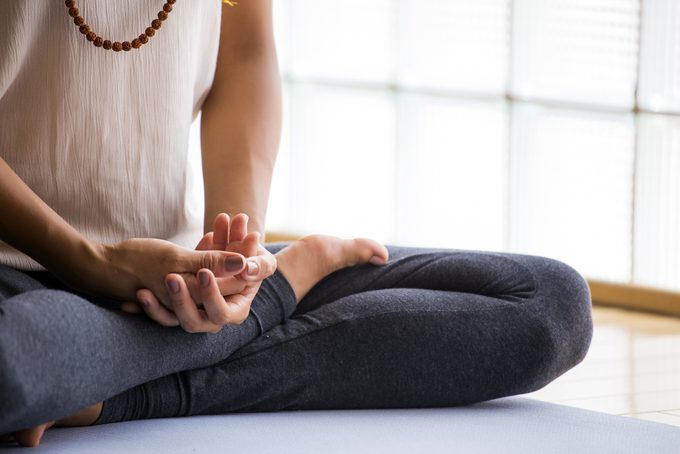A Beginner’s Guide To Meditation
Meditation does wonders for your health. Here’s how to get started.

Meditation For Beginners
Meditation isn’t just for hippies, it’s a tool that can help all of us navigate our lives. ‘Meditation is both the experience of being present in this moment, and the technique that helps us experience such presence,’ says Deb Shapiro, coauthor of Be the Change: How Meditation Can Transform You and the World. ‘Meditation brings us into the present moment where everything superfluous drops away and we are just aware of being.’
Why Meditate?
“Meditation has a remarkable effect,” says Shapiro, citing among its benefits a reduction in stress, a slower heartbeat, deeper breath and a relaxation of inner tension. “It also enables us to let go of past difficulties, irritations, anger, grievances and conflicts, by just being present with what is.” By releasing these negative emotions, she adds, we are more open to positive feelings such as joy and kindness. Through meditation, she says, “we feel a whole lot better and more in touch with who we really are.”
“Humans discovered meditation out of need,” says Toronto yoga instructor Hali Schwartz, who has studied at the International Meditation Institute in Kullu, India, adding that the immediate effects of meditation include better perspective on one’s life, a wiser mind and less-stagnant energy’all factors that will help you deal better with what your day brings you.
Start Meditating Today
The most important thing is to start a habit of meditation, with frequency rather than length as the goal. Figure out how you can fit in five to 10 minutes a day of sitting silently. While Schwartz recommends starting first thing in the morning, “when the mind is fresh,” Shapiro says the key is finding a time that fits your and your family’s schedule.
After that? Just sit, says Schwartz, who notes that in strict yogic tradition, meditation is always practised in a comfortable seated position with an erect spine. Also, try sitting cross-legged on a cushion or yoga block, or on a chair that allows you to hold the body up rather than slouching. “Close the eyes and simply ‘watch’ the thoughts as they arise,” she says. “Let the breath feel effortless and smooth.”
Another meditation technique, says Shapiro, is to focus the attention on the breath. “Just breathe naturally, in and out, no forced, short or long breathing,” she says. ” If you get distracted, then silently count at the end of each out breath: breathe in, out, count one; in, out, count two; in, out, count three. Continue to five then start at one again. This just helps bring you into the present moment.”
Secrets To Meditation Success
Meditation isn’t easy, whether your personal struggle is just to find the time to sit, or battling the endless to-do lists in your head. The key, say both Shapiro and Schwartz, is commitment and repetition. “The more often you do it, the better you feel,” Shapiro says.
Most important? Don’t judge yourself or your thought processes. Let go of interruptions and keep coming back to square one. ‘The mind is very good at finding reasons not to be still,’ says Shapiro. “When it does, just come back to your breath.” And Schwartz notes that learning to observe your mind rather than react is part of the whole process. “Cultivate the ability to observe what you are thinking, rather than trying to fruitlessly stop the thoughts,” she says. “Say to yourself: now my mind is thinking about the laundry… now my mind is remembering this sad event from my past… and so on and so on.”
Above all, remember that it isn’t complicated. ‘To meditate is to just be quiet and still,’ Shapiro says. ‘Nothing more. In that quiet and still space we meet ourselves just as we are.’




